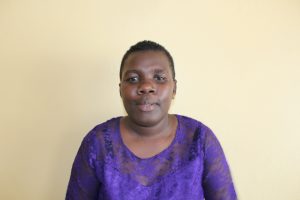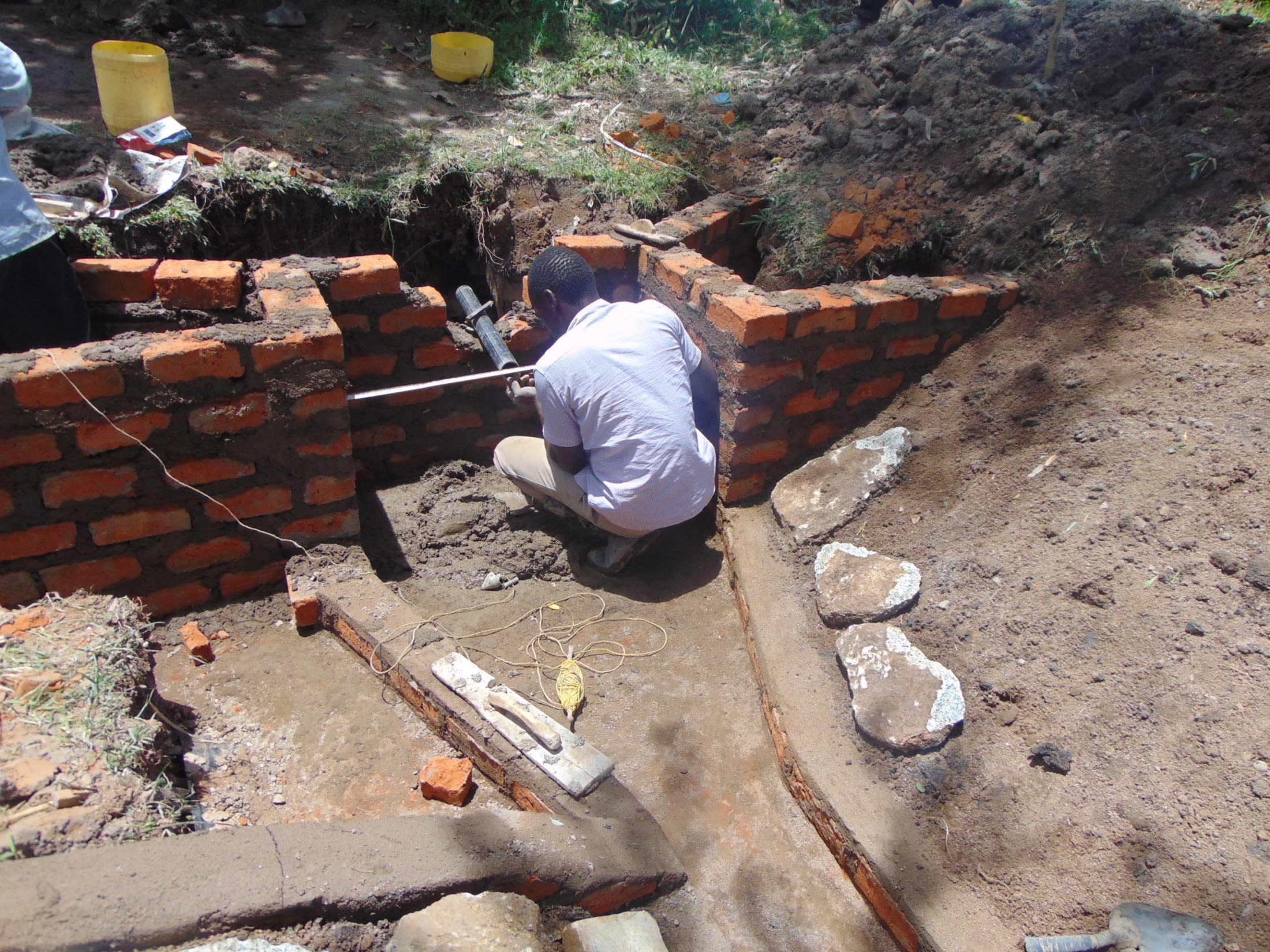The 140 people who live in Kalenda use Peter Mukangai spring as their only water source.

Several years ago, community members attempted spring protection and contributed the resources they could afford, but unfortunately, did not have the knowledge needed to protect it properly. At the time, they experienced great joy seeing water flowing, thinking they had succeeded, but sadly time has shown that to not be the case.

Although they did their best, since the work was inexpertly done, the structure is now in poor condition. Water can be seen oozing from both the side walls and above the drawing point, the discharge pipe is rusting, and algae covers the walls.
Many community members suffer from sore throats and diarrhea infections after drinking water from the source.

"Like now, I have [a] sore throat, and this has been something going on and off for some time because of drinking water direct from the source. I used to boil it, but I stopped because boiled water has no taste. So I believe if the spring is well-covered, we will minimize these infections as before," said 38-year-old farmer Esther Nafula, shown above collecting water from the spring.
But contaminated water is not the spring's only problem. Since the spring doesn't function correctly, the water has a decreased discharge rate that leads to slow collection times and overcrowding, wasting people's valuable time that should be used for other important things.
"Being a child, when I see my mates playing and [I] am not, I normally feel bad. Like yesterday, I left the water container at the water point and joined my friend to play. Then when I went back home, I was punished for being late. So the current water situation takes much of my playing time and even creates problems between my parents and I," said 12-year-old Horis M., collecting water below.

Protecting the spring properly will capture the entire water flow and increase the discharge rate to save time for people as they collect water, and with clean water flowing, community members will hopefully see improved health soon.
What We Can Do:
Spring Protection
Protecting the spring will help provide access to cleaner and safer water and reduce the time people have to spend to fetch it. Construction will keep surface runoff and other contaminants out of the water. With the community’s high involvement in the process, there should be a good sense of responsibility and ownership for the new clean water source.
Fetching water is a task predominantly carried out by women and young girls. Protecting the spring and offering training and support will, therefore, help empower the female members of the community by freeing up more of their time and energy to engage and invest in income-generating activities and their education.
Training on Health, Hygiene and More
To hold training, we work closely with both community leaders and the local government. We ask community leaders to invite a select yet representative group of people to attend training who will then act as ambassadors to the rest of the community to share what they learn.
The training will focus on improved hygiene, health, and sanitation habits in this community. With the community’s input, we will identify key leverage points where they can alter their practices at the personal, household, and community levels to affect change. This training will help to ensure participants have the knowledge they need about healthy practices and their importance to make the most of their water point as soon as water is flowing.
Our team of facilitators will use a variety of methods to train community members. Some of these methods include participatory hygiene and sanitation transformation, asset-based community development, group discussions, handouts, and demonstrations at the spring.
One of the most important issues we plan to cover is the handling, storage, and treatment of water. Having a clean water source will be extremely helpful, but it is useless if water gets contaminated by the time it is consumed. We and the community strongly believe that all of these components will work together to improve living standards here, which will help to unlock the potential for these community members to live better, healthier lives.
We will then conduct a small series of follow-up trainings before transitioning to our regularly scheduled support visits throughout the year.
Training will result in the formation of a water user committee, elected by their peers, that will oversee the operations and maintenance of the spring. The committee will enforce proper behavior around the spring and delegate tasks that will help preserve the site, such as building a fence and digging proper drainage channels. The fence will keep out destructive animals and unwanted waste, and the drainage will keep the area’s mosquito population at a minimum.





 Protected Spring
Protected Spring
 Rehabilitation Project
Rehabilitation Project

































